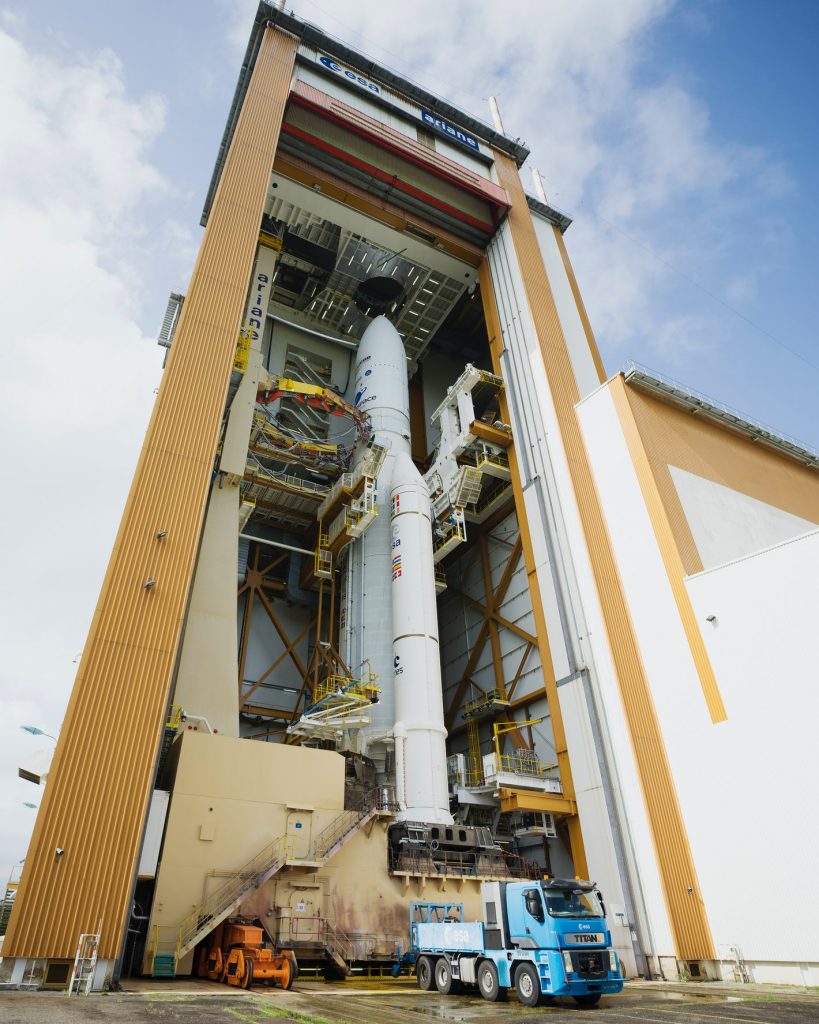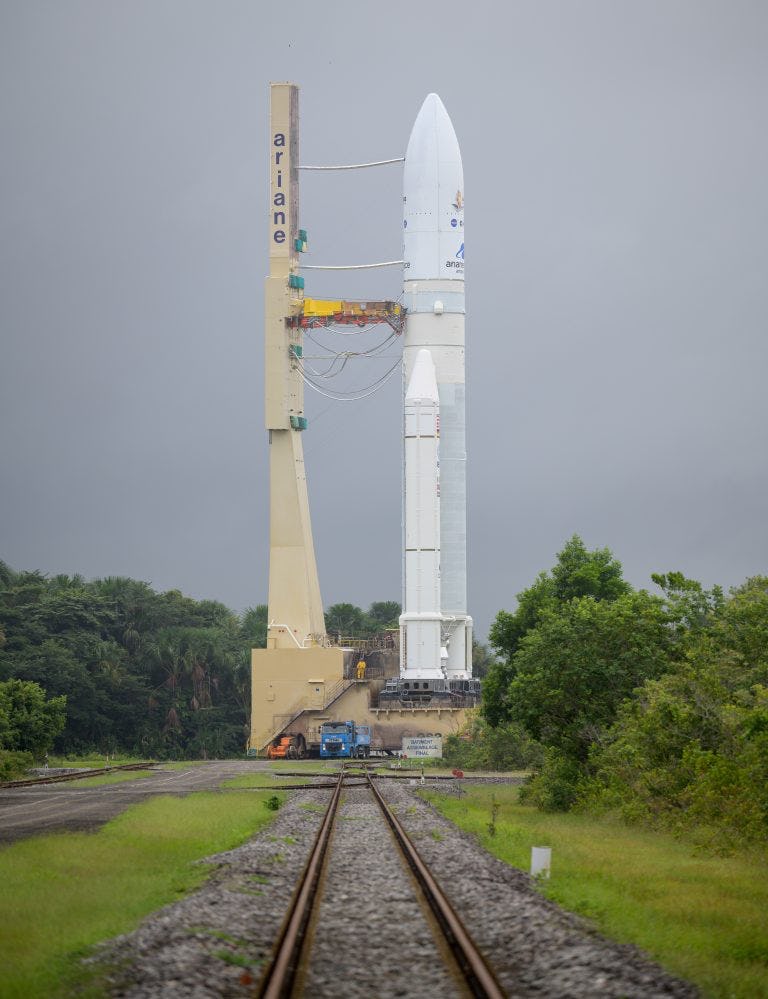After years of preparation and anticipation, it appears that the most significant space telescope ever built is now ready to be launched into orbit.
On December 23, NASA’s flagship James Webb Space Telescope (JWST) was carefully moved to the Arianespace ELA-3 launch facility in French Guiana, where it awaits a journey into space. This trip marks the end of Webb’s terrestrial experiences and the beginning of a far longer journey to its home, which is 1 million miles away.
The Ariane 5 rocket stands tall on the launchpad, with JWST tucked away within the nosecone. The sky is foggy, but the weather, which had previously been cited as a reason for a launch delay, appears to be fine for now.

JWST, which is securely placed on the launchpad, will undergo a few last tests to ensure that the rocket and telescope are ready for launch, NASA announced this morning in a press statement. Webb’s rocket will launch on December 25 at 7:20 a.m. EST (12:20 UTC).
The design and development of the telescope started decades ago, was repeatedly postponed, delaying the launch by years. Despite the completion of the $10 billion telescope, additional difficulties, such as a loose clamp and scheduling issues at the spaceport, pushed the launch date from the fall of 2021 to the end of the year.
JWST is finally set for its big event, fastened securely atop its launch vehicle. NASA, the European Space Agency, and the Canadian Space Agency collaborated on the space telescope.

The Earth’s atmosphere interrupts some light wavelengths and causes tiny distortions in views of distant galaxies and other deep-space phenomena. That is why space telescopes like Hubble and JWST are deployed into orbit, where they can observe space in clarity. Unfortunately, Webb will be too far away to service, even while Hubble remained in orbit above Earth, where it could be repaired, though with immense effort.
Following the launch, the telescope will split from the rest of the rocket and go for the second Lagrangian point, an unseen perch in space where the Earth’s and Sun’s gravity cancel each other out. The telescope’s sun shield must unfold during the voyage, followed by its primary mirror, a 21-foot-diameter disc of gold-plated hexagons. These intricate movements must be executed flawlessly, or the priceless space telescope will not function at all.
Webb will spend around six months at the L2 turning on and spreading its metaphorical wings. Then, finally, astronomers worldwide will be rewarded for their years of effort after all of the systems have been activated and tested, which is projected to happen in early summer 2022.
JWST, which will be more powerful than any previous observatory, including its predecessor Hubble, will be able to detect small glimmers of distant light. This will allow scientists to look back 13.5 billion years to a period when the universe was still young and galaxies were beginning to form – a moment that has been unseen to us.

Moreover, the telescope’s infrared instruments will also let scientists see the atmospheres of distant exoplanets in search of life signs. This will allow scientists to get new insights into our universe’s structure and ongoing life and decades of new discoveries.
You may watch the James Webb Space Telescope launch live on NASA’s website, NASA TV, or the NASA YouTube channel on Christmas Day. If all goes well, it will be an appropriate gift for scientists and space enthusiasts worldwide. Let’s hope Santa is in positive spirits this year.
Best wishes, JWST. Everyone is cheering for you.


